Burkina Faso
It was a walk 16-year-old Adama had done countless times, feeding the cows not far from his grandmother's house in northern Burkina Faso.
But one day in mid-February, the teen who dreamed of becoming an imam didn’t come home.
The next time his family saw him, it was in a harrowing cellphone video circulating on social media in the days after his disappearance.
Adama lay alongside six other bloodied boys, their hands bound and most stripped to the waist.
They were surrounded by about a dozen men, many in military fatigues, walking among the bodies, some taking video.
Sprinting through the frame, one man came to a halt over Adama and slammed a rock onto his head.
As blood streamed from the jagged wound, the man shooting the video chuckled.
“This one... was still alive,” said the man, referring to Adama, whose last name is being withheld by The Associated Press out of concern for the safety of his family.
“Good-for-nothing! You don’t have anything to do but to kill people. We’ll kill you one after another.”
Burkina Faso's military has denied responsibility for the killings, which is a potential war crime under international law.
But a frame-by-frame analysis of the 83-second video by AP and an examination of satellite imagery shows the killings happened inside a military base about two kilometers (one and a quarter miles) northwest of Ouahigouya, a regional capital near where Adama lived.
From their uniforms and vehicles, AP also determined troops in the video were members of Burkina Faso’s security forces, which until recently received military training and hardware from the United States and European Union.
And through exclusive interviews with Adama’s mother and uncle, AP was also able to reconstruct his final hours.
For seven years, Burkina Faso has been wracked by violence linked to al-Qaida and the Islamic State group.
Frustration at the government’s inability to stem the violence led to two coups last year by military juntas vowing to stamp out the insurgency.
Yet little has changed, with Burkina Faso overtaking Afghanistan as the nation with the most deaths globally from extremist violence, according to a report by the Global Terrorism Index.
A former French colony, Burkina Faso is a majority Muslim country that was initially spared jihadi violence that began in neighboring Mali 10 years ago.
France sent troops into the region to drive back the Islamic militants in 2013.
The violence has since swept across the vast semi-arid area of Africa south of the Sahara Desert.
Despite the jihadi violence, some civilians say they are more afraid of Burkina Faso’s security forces, who they accuse of extrajudicial killings and the disappearance of untold numbers of others accused of supporting the militants.
The killings have only grown under the junta led by Captain Ibrahim Traore, who seized power in September.
Part of the junta’s strategy has been to recruit some 50,000 volunteer fighters to serve alongside the military.
But residents say this has only contributed to civilian killings as the volunteers round up anyone they suspect of ties to the extremists.
Often those swept up are members of the minority ethnic Fulani, a largely Muslim group who mostly live in the north, where fighting has been most intense.
On the day that Adama, who was Fulani, disappeared his grandmother searched their village for him.
Hours later she learned the truth: Her grandson and a fellow cattle herder the family identified only as Ousseni had been seized by men on motorbikes and taken to a military base.
Ousseni, who is not Fulani, told her the security forces briefly questioned him before releasing him.
He said he overheard the troops accuse them of being jihadis.
Fearful for his life, Ousseni fled the country soon after speaking to Adama’s grandmother.
The video of Adama's killing began circulating on WhatsApp chat groups around 14 February.
A few days later, the teen’s body was found on a roadside near the military base where the video was filmed.
The AP spoke to members of Adama’s family who fled their homes after he disappeared.
Adama’s uncle heard his nephew was abducted by security forces from the boy’s grandmother.
Adama’s mother heard separately about her son’s seizure from another relative who saw him grabbed by security forces.
Neither the boy's uncle nor his mother wanted their names used for fear of reprisal.
During an interview with The Associated Press, the 40-year-old uncle replayed the video showing his nephew’s lifeless body.
“No one can escape death, but it is the way you die that makes a difference. This way of dying is so horrible,” he said.
He added he recognized his nephew from the blue shorts he was wearing and his body.
Adama’s mother has not seen the video; the family has kept it from her to spare her further anguish.
His body was buried by neighbors.
Nearly 300 civilians have been killed in attacks involving Burkina Faso security forces between October and February, compared to about 100 during the same period a year ago, according to the Armed Conflict Location & Event Data Project.
The violence has also taken a sharp ethnic turn, with the Fulani, including children, increasingly targeted.
“The abduction of children during sweep operations by some men in the security forces is not new,” said Daouda Diallo, general secretary of the Collective Against Impunity and Stigmatization of Communities, a local rights group.
Using evidence from the video, AP was able to match the location where it was filmed to a military base northwest of Ouahigouya, near where Adama was reported abducted.
Analysis of the soldiers’ uniforms and their vehicles were consistent with those used by Burkina Faso’s ground forces.
To aid the fight against the Islamic State group and al-Qaida, the U.S. and EU provided Burkina Faso with tens of millions of dollars in military training and equipment.
Two camouflaged pickup trucks shown in the video were Toyota Land Cruiser Series 70s - the same model provided to Burkina Faso by the U.S. and EU.
A large troop carrier was a Mercedes-Benz Atego, the kind the U.S. Defense Department delivered to Burkina Faso in 2014.
Four security force members wore shirts with the Burkina Faso flag on the left arm.
In a statement, a U.S. State Department spokesperson strongly condemned the "horrific violence as portrayed in the video", adding that allegations of human rights violations must be investigated and “those determined to be responsible held accountable.”
An EU spokesperson said that the bloc's support for Burkina Faso’s security and defense sector had focused on human rights and international humanitarian law and no lethal weapons had been delivered or financed.
While the AP cannot verify the exact date the video was recorded, a former Burkinabe government official and a soldier said the boys were killed after an attack by militants on a volunteer fighter outpost on 13 February, the day before the video appeared on social media.
A spokesperson for Burkina Faso’s government told AP that militants often disguise themselves as security forces and film their actions in order to blame the military.
But conflict experts say militants don’t typically commit atrocities and blame state security forces.
Nor do they kill children, for fear of alienating local populations.




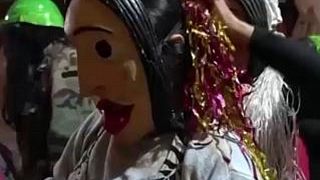


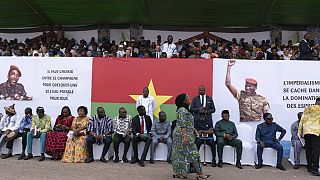
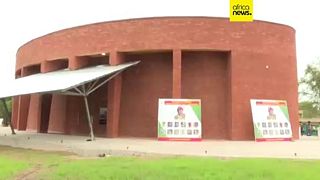
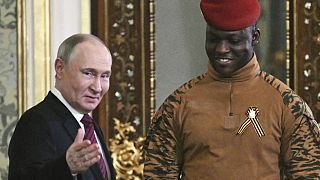
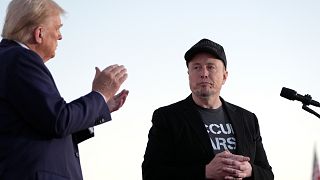
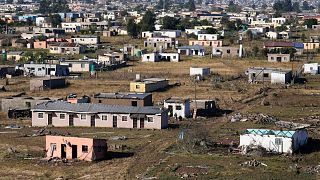

01:09
Kenyan Police officers charged over death of blogger in custody
00:08
Vatican beatifies Congolese customs worker killed in 2007 for refusing bribe
01:06
Military parade celebrates 250 years of US military
01:05
Trump deploys National Guard to Los Angeles immigration protests
01:10
A South African woman is sentenced to life in prison for selling her young daughter
Go to video
Missing South African journalist and partner confirmed dead